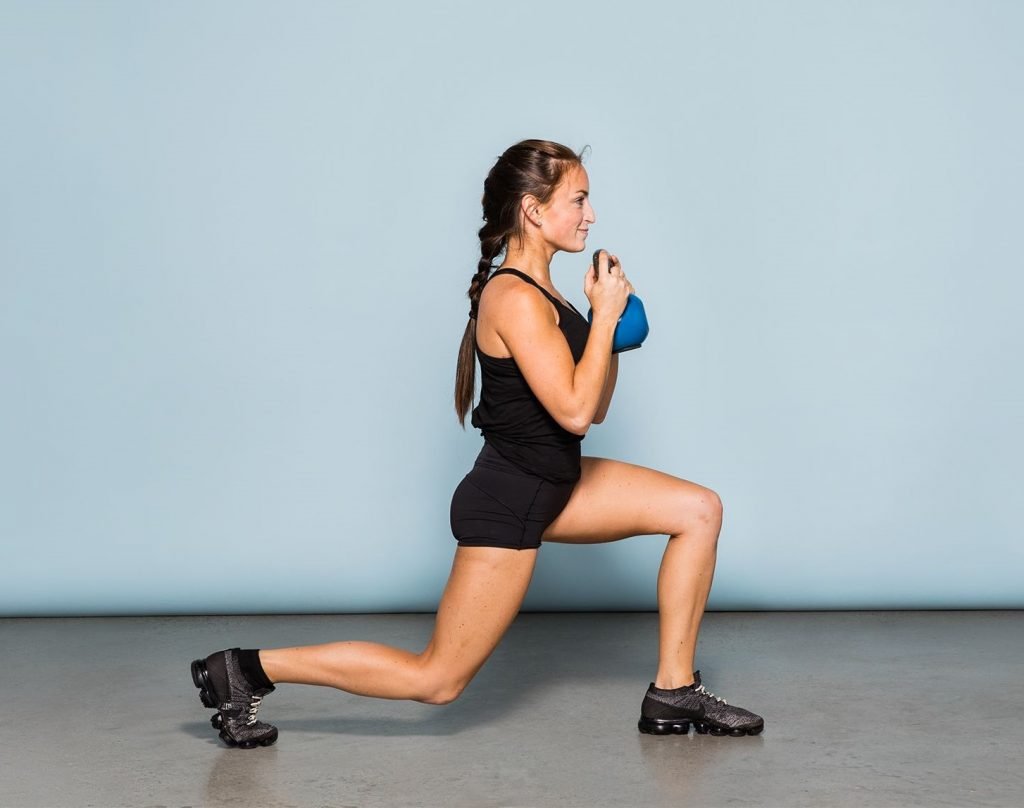Thigh fat is a problem in people, especially women with pear-shaped or Gyneoid obesity. In contrast to Android obesity (apple-shaped obesity, common in men), it has little association with metabolic syndrome. How to lose thigh fat and tone your buttocks may be a challenge for some people.
Since Gynoid obesity is a type of obesity that is more common in women, getting rid of thigh fat is more of a concern for women than men.
Although thigh fat or gynoid obesity is not commonly associated with metabolic syndrome and cardiovascular diseases, getting rid of thigh fat is much more difficult than getting rid of belly fat.
How to get rid of thigh fat?
Thigh fat, just like belly fat can be lost in two ways:
- Diet
- Exercise
Diet and exercise cause loss of weight in all the body along with the thighs too. A low-calorie diet can help you lose weight, however, there are no specific diets that can help you get rid of thigh fat in specific.
Exercises, if aimed towards losing thigh fat can help you lose thigh fat in specific. Combining a low-calorie diet with thigh fat-directed exercises can help you achieve your goals quickly.
Exercises that help you lose thigh fat:
The following exercises mainly target thigh fat:
Squats

There are lots of squat activities you can do, but the main way to do this is: Do your legs shoulder-width apart, and lower your bum to the ground until your thighs are lined up with the ground. Balance here for somewhere around three seconds before pushing up.
Also, use an exercise ball to do it. Place the ball against the wall with your lower back solidly pressed against the ball. The ball will enhance the intensity of it and also give you a decent back rub!
Lunges

Holding a 5-or 8-pound weight in each hand, thrust forward with one leg and bring the other knee about an inch over the ground.
Step back and go on with the other leg and bring it in so it gently taps the rear of your right knee. Extend your left leg out once more. Now do the same action with the other leg.
Burpees, Leg circles, and jumping jacks are all best for burning body fat. However, they are not specific for losing thigh fat.
A diet that helps you lose fat:
Keep yourself hydrated!
Drink plenty of water. It is cheap, healthy, and tastes great. Water helps in the excretion of harmful toxic substances, gives a moist atmosphere to body cells that require it, and is essential in the transport of nutrients to cells. Specialists suggest drinking 64 ounces of liquid each day, or around 1.9 liters (0.5 US gal).
Keep yourself away from soft drinks, caffeinated drinks, concentrated juices, and so on. Though everyone wants to drink them, they make losing weight very difficult.
These beverages have lots of sugar and have empty calories in them, in some cases however much as 300 which can nullify an entire exercise.
Green Tea
Make a habit of drinking green tea as it contains very less calories and is an antioxidant.
Drink green tea for an extraordinary wellspring of cell reinforcements and irrelevant calories. Green tea contains multiple times the polyphenols as many different veggies and helps the body cells from free radicals.
The best part is that it contains 1-2 calories for each liter, so you can easily drink as much as you can, without any guilt.
Drink some tea or a glass of water 30 minutes before you eat. This will fool your body into accepting it’s more full than it is, and you will automatically eat less.
Try to eat after taking some time after drinking because if you eat immediately after drinking, it causes indigestion. Dieting is not necessary for eating healthy.
Just watching what you eat will assist you with reducing weight and getting fit. While eating you should find what kind of things from every nutrition type you ought to eat. You should just eat a balanced diet whenever you eat.
Complex Starches Vs Refined Carbohydrates:
The body absorbs complex starches more slowly than simple starches so they don’t make you feel heavy. Unprocessed grains like brown rice, oats, and whole wheat grains are included in them.
Protein:
You should choose lean meat while getting your protein consumption. Fish and poultry are included in it. Different types of good protein are nuts, beans, and soy items.
Vegetables and fruits:
While it might be difficult to accept, some fruits and vegetables are more useful than others. Look for superfoods like swiss chard. and blueberries.
Bad and good fats:
Omega 3 unsaturated fats and monounsaturated fats are great for your body and will assist you with bringing down your cholesterol levels. “Good fats” include nuts, seed oil, fish oil, and olive oil.
The size of the thighs and the fats on them are increased by saturated and trans fatty acids. Candy, cakes, and processed food are included in it.
Dairy:
Try to take low-fat dairy items. Yogurt is particularly perfect, as it contains microscopic organisms that help in the processing and digestion of food proficiently.
Protein and calcium are provided in great quantities by dairy products.
Low-starch (Atkins) diet:
The hypothesis is that overweight individuals eat a large amount of sugar. An eating routine rich in carbs makes the body discharge insulin.
The body controls glucose (sugar) by insulin production. It moves the sugar out of your blood, and some of it could be changed over into fat.
The low-carb diet structures your feasts around proteins, organic products, soy items, vegetables, and nuts to keep away from this.
While you need to restrict the number of carbs you eat, you would rather not remove them from your eating routine.
Attempt to have carbs somewhere around 20% of the time. Your body needs glucose to work, and carbs are the main source of it.
Food sources that are involved in the component of the low-carb diet are:
- Natural, high-protein meats, like sheep, chicken, and turkey.
- Natural, high-protein fish, like salmon, mackerel, and trout.
- Low-sugar vegetables and mixed greens.
- Full-fat, natural milk cheeses of cow, goat, or sheep.
Keto diet
It is a low-carb diet in which one abstains from food in what one is attempting to abstain from eating sugars by replacing them with fats and proteins in your diet.
The thing that matters is that it is higher in fats and lower in proteins than the Atkins diet.
Why fats rather than protein?
If you eat a lot of protein, your body transforms the extra protein into glucose, which is the thing you were attempting to stay away from in carbs. In contrast, fats don’t affect glucose and insulin levels.
Try to get around three-fourths of calories from lipids, one-fourth from proteins, and 5-10% from carbohydrates. Limit the number of carbs you eat to somewhere in the range of 20 and 50 grams every day.
Be serious about the number of carbs you eat as it is a fundamental part of the keto diet, it’s vital to comprehend how to count carbs accurately.
Get adequate sleep:
Along with exercises, sleep and rest are also necessary to lose weight. Getting sufficient rest and sleep can assist you with shedding pounds. Yes! You heard right, sleeping enough can assist you with getting in shape.
At the point when your body doesn’t get sufficient sleep, it forms a chemical hormone called ghrelin and lowers levels of another chemical called leptin.
Leptin lets your cerebrum know when you are full, and ghrelin increases your craving. At the end of the day, when you don’t get sufficient rest, your body has a greater hunger and your cerebrum doesn’t convey as many messages to your body that it’s full.
Individuals with sleep apnea, which causes an end of breathing for timeframes during the night, are more likely to be overweight.
If you assume you have sleep apnea, it’s really smart to have it looked at by a specialist so your sleep starts giving results.
- 97% Pure Berberine Powder – High-purity, plant-derived extract with a rich yellow color. Carefully processed and lab-tes…
- Naturally Bitter Taste – Berberine has a strong, naturally bitter flavor. Best enjoyed when mixed with smoothies, tea, c…
- 100g in Resealable Foil Pouch – Packaged in a premium aluminum pouch to protect from moisture and light, keeping the pow…

- 5 Delicious Flavors: Freeze-Dried Mango, Freeze-Dried Blueberry, Freeze-Dried Orange, Freeze-Dried Dragon Fruit & Freeze…
- Pure and Natural Ingredients: Our fruit powders are made without synthetic pesticides, GMOs, or harmful chemicals. Each …
- Health Benefits: Our carefully selected fruits are packed with antioxidants, vitamins, fiber, and digestive enzymes to s…

- 🌿 4 Tangy Citrus Flavors in One Pack: Enjoy a delicious variety of Orange, Lime, Lemon, and Kiwi powder – 5 sachets of e…
- 💧Easy to Mix & Refreshing: Just add to water, smoothies, sparkling drinks, or tea for a vibrant citrus kick. Dissolves i…
- 🛡️Rich in Vitamin C & Antioxidants: Made from real fruit powders, this mix offers a natural source of vitamin C to suppo…

- VARIETY PACK – Includes 5 delicious organic berry powder flavors: Freeze-Dried Goji Berry, Freeze-Dried Strawberry, Free…
- PURE INGREDIENTS – Made with 100% natural, freeze-dried berries and absolutely no added sugar, artificial ingredients, o…
- CONVENIENT PACKAGING – Contains 20 pre-portioned 5g packets (100g total), eliminating the need for measuring and ensurin…








